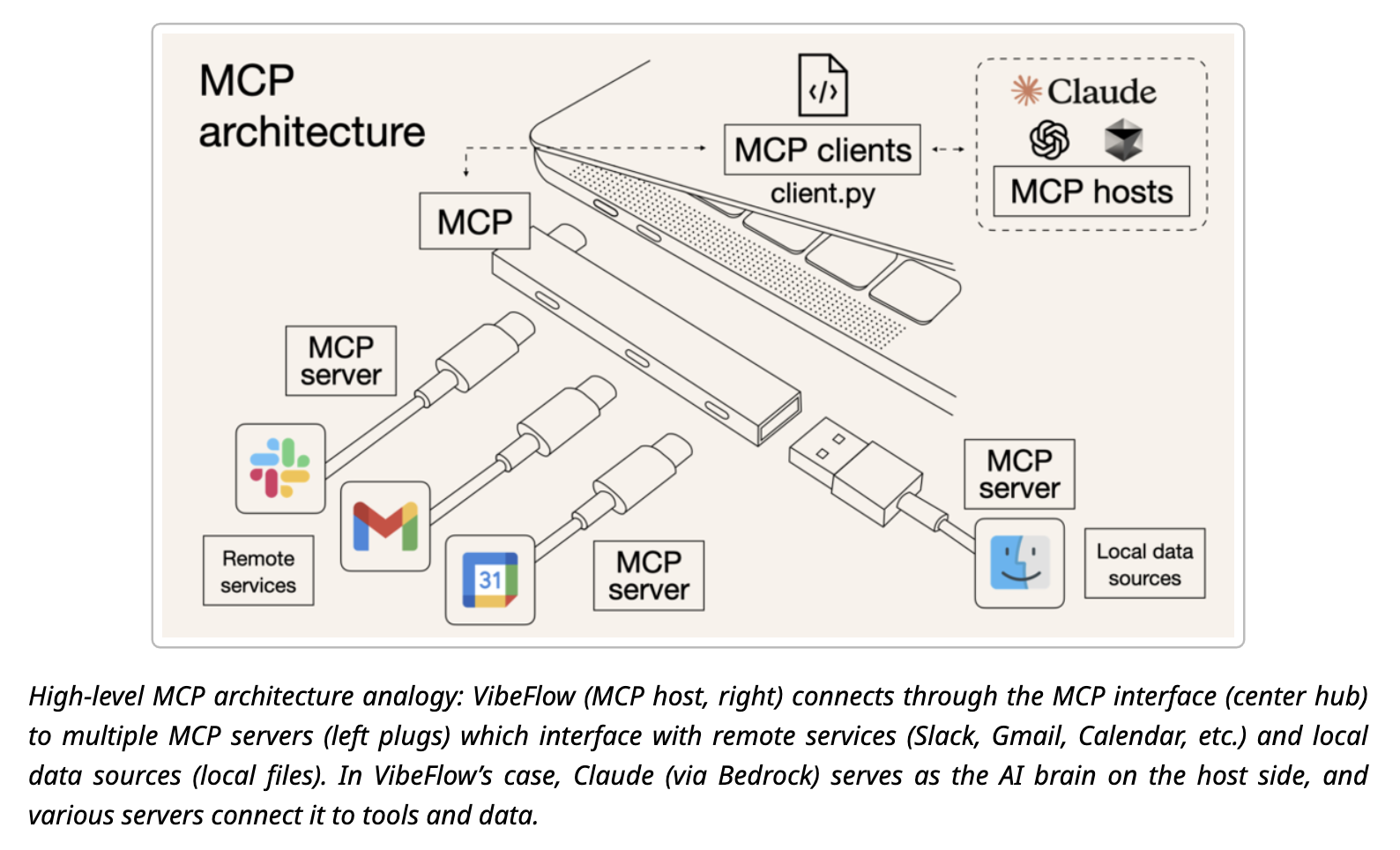
VibeFlow MCP Automation: Building AI-Powered Document Management CLI
Scroll to explore
In this advanced chapter, practitioners are going to develop a more ambitiously featured project. While teams can continue to follow the guidance from Rails of Vibe Coding, teams can try some interesting variants to the vibe coding strategies.
I want to develop VibeFlow - a personal document management and workflow automation CLI app inspired by recently launched agent based CLI experiences including Anthropic Claude Code and OpenAI Codex.
Prompting VibeFlow Product Definition
First variant from prior projects and vibe coding workflows is that during product definition phase practitioners are opinionated about using minimal technical stack (Python), user experience (CLI), model and platform (Amazon Bedrock hosted Claude Sonnet), and agent protocol (MCP).
I use the following definition of VibeFlow project to prompt Claude Desktop and O4-mini-high in Deep Research mode.
Read https://modelcontextprotocol.io/introduction to learn about MCP protocol, servers, and clients and related code examples in Python. Then study how a popular MCP client and server Claude Code has been designed by reading https://gerred.github.io/building-an-agentic-system/index.html and https://docs.anthropic.com/en/docs/claude-code/overview.
Now ultrathink to create requirements, design, and technical specifications of a modern Command Line Interface user experience for a document and workflow automation tool called VibeFlow.
Just like Claude Code our product VibeFlow can be launched in a given folder, it comes pre-configured with relevant MCP servers from https://modelcontextprotocol.io/examples and https://github.com/punkpeye/awesome-mcp-servers lists for document management, content management, knowledge management, document search, online search, document generation, document editing, and document Q&A.
It has a chat interface like Claude Code. It also has an Explorer interface to browse documents. It also has an interface to help define agent based workflows using various MCP tools at its disposal.
The domains for these workflows are personal productivity including document management, planning, and task management. The specialized domains also include personal investment planning, work and educational research and report generation, and online shopping research, comparison, recommendations, and activities.
Make sure the technology stack in based on Python. The CLI should run on a personal laptop. It should leverage Amazon Bedrock managed Claude Sonnet 3.7 model capabilities to its fullest to automate and integrate with all features of VibeFlow.
Integration with Trenddit Ecosystem
This approach aligns with Trenddit’s mission to provide lean AI automation solutions. The Trenddit Memo browser extension exemplifies these principles by enabling knowledge workers to capture, organize, and interact with information using AI-powered automation.
Trenddit Memo Synergy:
- Unified Workflow: Capture content in browser, process with VibeFlow CLI
- Cross-Platform Automation: Browser extension feeds into desktop workflows
- Knowledge Integration: Combine web research with document management
- AI-Powered Processing: Leverage same AI models across both platforms
Ecosystem Benefits:
- Seamless Experience: Continuous workflow from browser to desktop
- Enhanced Productivity: Combine web research with local document processing
- Unified AI: Consistent AI assistance across all touchpoints
- Complete Platform: Full-spectrum knowledge management solution
For organizations looking to implement similar AI-driven workflows, consider how tools like Trenddit Memo can streamline knowledge management and enhance productivity across teams.
